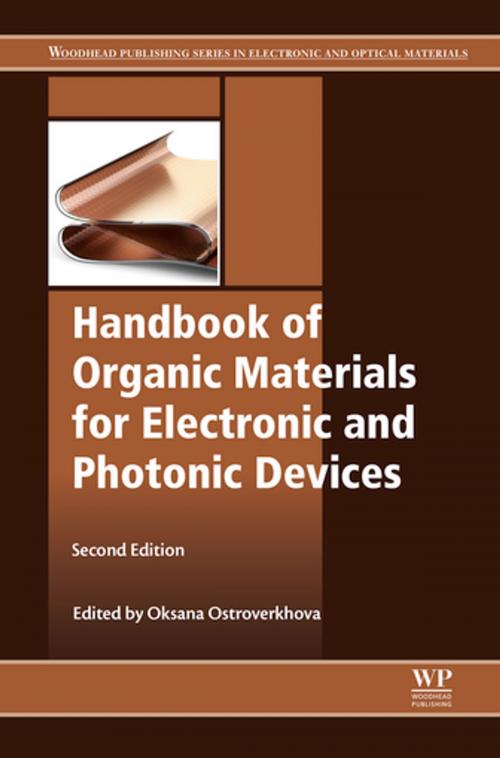Handbook of Organic Materials for Electronic and Photonic Devices
Nonfiction, Science & Nature, Technology, Material Science, Electronics| Author: | ISBN: | 9780081022856 | |
| Publisher: | Elsevier Science | Publication: | November 30, 2018 |
| Imprint: | Woodhead Publishing | Language: | English |
| Author: | |
| ISBN: | 9780081022856 |
| Publisher: | Elsevier Science |
| Publication: | November 30, 2018 |
| Imprint: | Woodhead Publishing |
| Language: | English |
Handbook of Organic Materials for Electronic and Photonic Devices, Second Edition, provides an overview of the materials, mechanisms, characterization techniques, structure-property relationships, and most promising applications of organic materials. This new release includes new content on emerging organic materials, expanded content on the basic physics behind electronic properties, and new chapters on organic photonics. As advances in organic materials design, fabrication, and processing that enabled charge unprecedented carrier mobilities and power conversion efficiencies have made dramatic advances since the first edition, this latest release presents a necessary understanding of the underlying physics that enabled novel material design and improved organic device design.
- Provides a comprehensive overview of the materials, mechanisms, characterization techniques, and structure property relationships of organic electronic and photonic materials
- Reviews key applications, including organic solar cells, light-emitting diodes electrochemical cells, sensors, transistors, bioelectronics, and memory devices
- New content to reflect latest advances in our understanding of underlying physics to enable material design and device fabrication
Handbook of Organic Materials for Electronic and Photonic Devices, Second Edition, provides an overview of the materials, mechanisms, characterization techniques, structure-property relationships, and most promising applications of organic materials. This new release includes new content on emerging organic materials, expanded content on the basic physics behind electronic properties, and new chapters on organic photonics. As advances in organic materials design, fabrication, and processing that enabled charge unprecedented carrier mobilities and power conversion efficiencies have made dramatic advances since the first edition, this latest release presents a necessary understanding of the underlying physics that enabled novel material design and improved organic device design.
- Provides a comprehensive overview of the materials, mechanisms, characterization techniques, and structure property relationships of organic electronic and photonic materials
- Reviews key applications, including organic solar cells, light-emitting diodes electrochemical cells, sensors, transistors, bioelectronics, and memory devices
- New content to reflect latest advances in our understanding of underlying physics to enable material design and device fabrication















